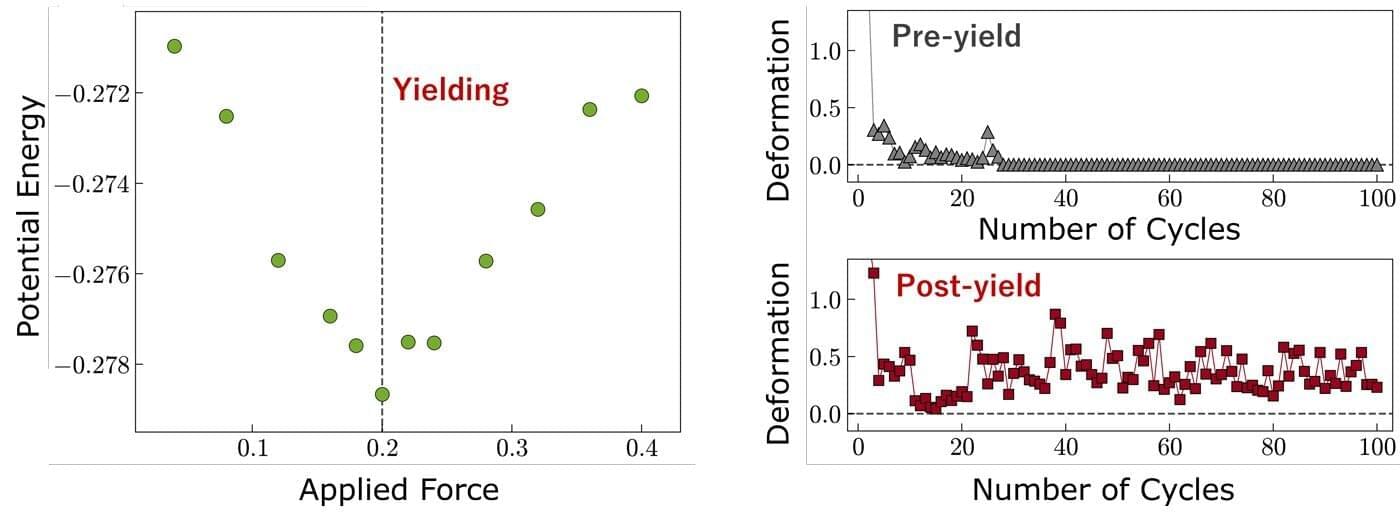A textbook rule for the relationship between the structure and strength of a material breaks down for high-speed deformations, like those caused by strong impacts.
On the microscale, metallic materials are made of homogeneous crystalline regions—grains—separated by disordered boundaries. In general, materials with smaller grains are stronger because they have more grain boundaries, which impede deformation. But researchers have now demonstrated a radical departure from this rule: With rapid deformation, such as that from an explosive impact, finer grained metals are softer, not harder [1]. This new insight, the researchers hope, could be useful for engineers developing impact-resistant alloys for armor, aerospace structures, or hypersonic vehicles.
The yield strength of a material is the stress (force) at which it begins to deform permanently rather than springing back. At the atomic scale in crystalline materials, this deformation occurs when sections of the crystal slide past one another, facilitated by the motion of structural defects called dislocations. But at grain boundaries, dislocations are halted and can pile up, which translates into resistance to deformation and increased yield strength. Materials with smaller grains have more grain boundaries than those with larger grains, so smaller grains are associated with higher strength.









